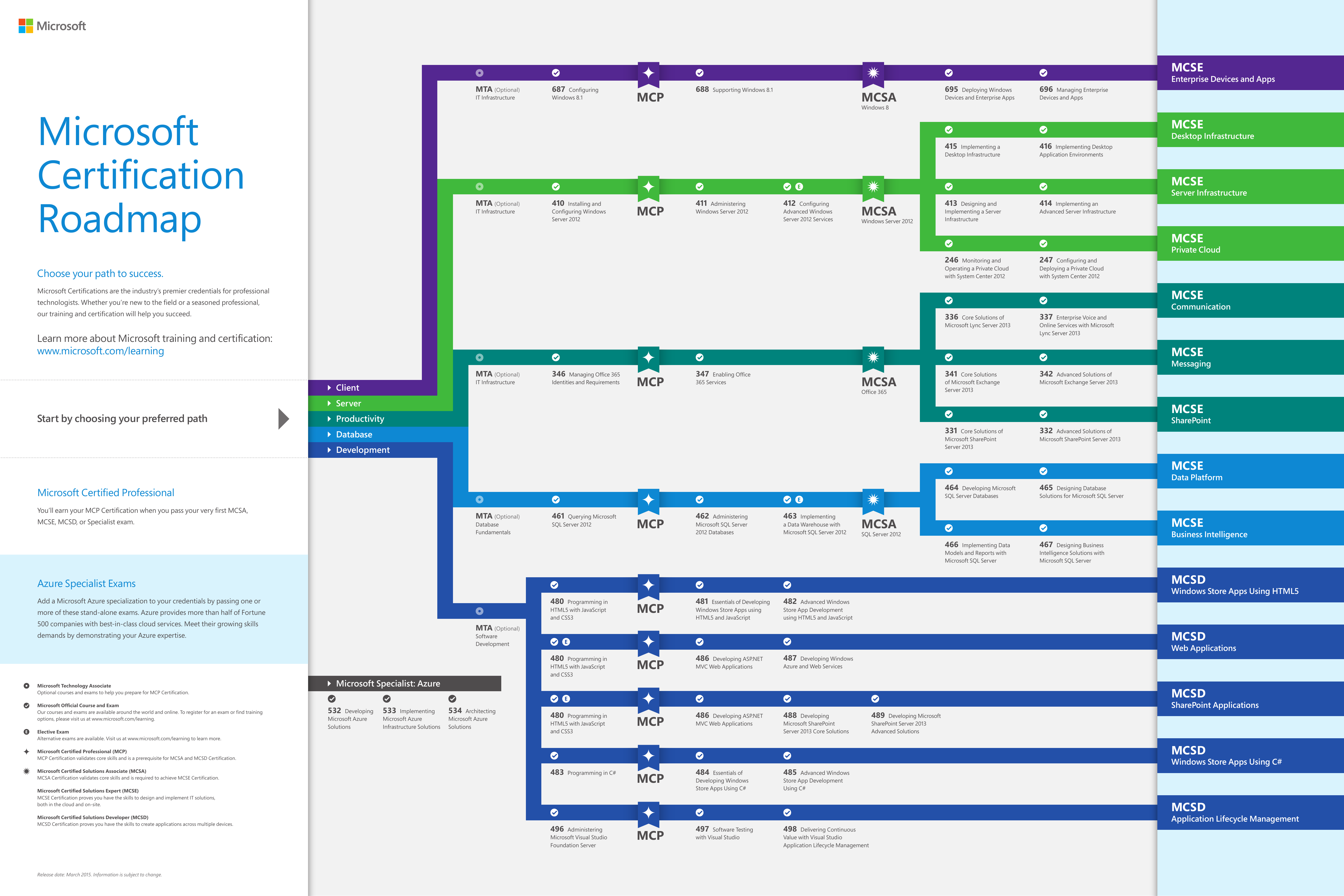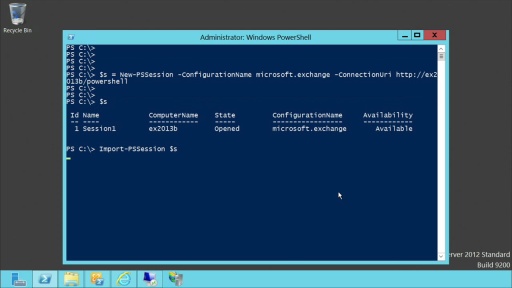Home > Articles
Core Solutions of Exchange Server 2013: (04) Configuring the Message Transport. Oct 11, 2013 at 8:33AM. Average of 0 out of 5 stars 0 ratings Sign in to rate Close Tweet. The new Exchange Server 2013 Core Solutions course provides full coverage of the knowledge and skills to plan, deploy, secure, support and manage Exchange Server 2013. This new and exciting course will enable you to configure Exchange Server 2013 and provide the information needed to maintain, troubleshoot and monitor Exchange Server 2013. Core Solutions of Microsoft Exchange Server 2013 (20341) $599.00 – $2,995.00 In this course, students will learn to configure and manage a Microsoft Exchange Server 2013 messaging environment. M20341 A www.globalknowledge.com.eg training@globalknowledge.com.eg 00 20 (0) 2 2269 1982 or 16142 Core Solutions of Microsoft Exchange Server 2013 Duration: 5 Days Course Code: M20341 Version: A Overview: In this course, students will learn to configure and manage a Microsoft Exchange Server 2013. The secondary audience for this course are professionals who are looking to take the exam 70-341A: Microsoft Exchange Server 2013, Core Solutions, as a standalone, or as part of the requirement for the MCSE: Microsoft Exchange Server 2013 certification will take this course as preparation material.
␡- Exam Details / Trouble Spots
Although much of Exchange Server 2013 remains unchanged from Exchange Server 2010, Microsoft has made some major architectural changes with regard to server roles and system requirements. As such, those wishing to prove their proficiency with Exchange Server would be wise to take exam 70-341: Core Solutions of Microsoft Exchange Server 2013.
Exam Details

- Number of questions: Microsoft does not disclose the number of questions on their certification exams, but this exam is estimated to have about 50 questions.
- Type(s) of questions: Microsoft does not disclose the exam format, but the bulk of the exam is reported to be made up of multiple choice questions. You may also encounter simulations, reorder, or build a tree questions.
- Passing score: 700/1000
- Time limit: Microsoft does not disclose the time limit for their exams, but most exams have a time limit of about two hours.
- How to register: Prometric
Trouble Spots
Exam 70-341 is a basic skills exam for Exchange Server 2013. That being the case, most of the material on the exam is relatively straightforward. However, there is one area that could be potentially problematic to those taking the exam.
Although the exam content focuses solely on Exchange Server 2013, the exam does require a bit of knowledge about legacy Exchange Server deployments. This exam focuses heavily on installation and installation planning. Part of that is making sure that Exchange Server 2013 will be able to work with your existing Exchange Server infrastructure. Therefore, make sure that you spend some time learning about backward compatibility and coexistence.
Likewise, make sure that you spend plenty of time learning about the new Exchange Server roles. Exchange Server 2007 and Exchange Server 2010 both used five server roles. In Exchange Server 2013, these five roles have been condensed into two. You will need to know what these new roles are, what they do, and how they equate to the roles that were previously available.
Related Resources
There are currently no related titles. Please check back later.
ระยะเวลา : 2 วัน ราคา : 6,500 บาท ราคาพิเศษ
วัตถุประสงค์
This course will provide you with the knowledge and skills to plan, deploy, manage, secure, and support Microsoft Exchange Server 2013. This course will teach you how to configure Exchange Server 2013 and supply you with the information you will need to monitor, maintain, and troubleshoot Exchange Server 2013. This course will also provide guidelines, best practices, and considerations that will help you optimize performance and minimize errors and security threats in Exchange Server 2013.
อาจารย์ผู้สอน : Supsit Soysing (AUY)


AT COURSE COMPLETION
After completing this course, students will be able to:
• Deploy and manage Exchange Server 2013.
• Plan and configure the Mailbox server role.
• Manage recipient objects, address policies, and address lists in Exchange Server 2013.
• Plan and implement the Client Access server role in Exchange Server 2013.
• Securely plan and configure Microsoft Outlook Web App and mobile messaging using the Client Access server.
• Understand and manage highly available Client Access servers in Exchange Sever 2013.
• Plan for disaster mitigation, implement back up and recovery for Exchange Server 2013.
• Plan and configure message transport in an Exchange Server 2013 organization.
• Plan message security options, implement an antivirus solutions, and implement an anti-spam solution.
• Configure permissions and secure Exchange Server 2013.
• Monitor, maintain, and troubleshoot an Exchange Server 2013 environment.
PREREQUISITES
Before attending this course, students must have:
• Minimum of two years of experience administering Windows Server, including Windows Server 2008 R2 or Windows Server 2012.
• Minimum of two years of experience working with Active Directory Domain Services (AD DS).
• Minimum of two years of experience working with name resolution, including DNS.
• Experience working with certificates, including PKI certificates.
สื่อต่างๆที่ใช้ในการอบรม
Powerpoint LAB
COURSE OUTLINE
Module 1: Deploying and Managing Microsoft Exchange Server 2013
This module describes Exchange Server 2013 prerequisites and requirements, deployment and management.
Lessons
• Exchange Server 2013 Prerequisites and Requirements
• Exchange Server 2013 Deployment
• Managing Exchange Server 2013
Lab : Deploying and Managing Exchange Server 2013
• Evaluating Requirements and Prerequisites for an Exchange Server 2013 Installation
• Deploying Exchange Server 2013
• Managing Exchange Server 2013
After completing this module, students will be able to:
• Describe Exchange Server 2013 prerequisites and requirements.
• Perform an Exchange Server 2013 deployment.
• Manage Exchange Server 2013.
Module 2: Planning and Configuring Mailbox Servers
This module describes how to plan and configure the Mailbox server role.
Lessons
• Overview of the Mailbox Server Role
• Planning the Mailbox Server Deployment
• Configuring the Mailbox Servers
Lab : Configuring Mailbox Servers
• Planning Configuration for Mailbox Servers
• Configuring Storage on the Mailbox Servers
• Creating and Configuring Mailbox Databases
After completing this module, students will be able to:
• Describe the Mailbox server role.
• Plan for a Mailbox server role deployment.
• Configure the Mailbox servers.
Module 3: Managing Recipient Objects
This module explains how to manage recipient objects, address policies, and address lists in Exchange Server 2013.
Lessons
• Managing Exchange Server 2013 Mailboxes
• Managing Other Exchange Recipients
• Planning and Implementing Public Folder Mailboxes
• Managing Address Lists and Policies
Lab : Managing Recipient Objects
• Configuring Trey Research Recipients
• Configuring Address Lists and Policies for Trey Research
• Configuring Public Folders for Trey Research
After completing this module, students will be able to:
• Manage Exchange Server 2013 mailboxes.
• Manage other Exchange Server 2013 recipients.
• Implement public folders.
• Configure address lists and policies.
Module 4: Planning and Deploying Client Access Servers
This module explains how to plan and implement the Client Access server role in Exchange Server 2013.
Lessons
• Planning Client Access Server Deployment
• Configuring the Client Access Server Role
• Managing Client Access Services
Lab : Deploying and Configuring a Client Access Server Role
• Configuring Certificates for the Client Access Server
• Configuring Client Access Services Options
• Configuring Custom MailTips
After completing this module, students will be able to:
• Plan Client Access server deployment.
• Configure the Client Access server roles.
• Manage Client Access services.
Exchange Server 2013 Purchase
Module 5: Planning and Configuring Messaging Client Connectivity
This module explains how to plan and configure Microsoft Outlook Web App and mobile messaging in Exchange Server 2013.
Lessons
• Client Connectivity to the Client Access Server
• Configuring Outlook Web App
• Planning and Configuring Mobile Messaging
• Configuring Secure Internet Access for Client Access Server
Lab : Planning and Configuring Messaging Client Connectivity
• Planning Client Connectivity
• Configuring Outlook Web App and Outlook Anywhere
• Configuring Exchange ActiveSync
• Publishing Exchange Server 2013 through TMG 2010
After completing this module, students will be able to:
• Describe the client services Exchange Server 2013 provides.
• Configure Outlook Web App.
• Plan and configure mobile messaging.
• Configure secure Internet access for Client Access server.
Module 6: Planning and Implementing High Availability
This module explains the high-availability technology built into Exchange Server 2013, and some of the outside factors that affect highly available solutions.
Lessons
• High Availability on Exchange Server 2013
• Configuring Highly Available Mailbox Databases
• Configuring Highly Available Client Access Servers
Lab : Implementing High Availability
• Creating and Configuring a Database Availability Group
• Deploying Highly Available Client Access Servers
• Testing the High-Availability Configuration
After completing this module, students will be able to:
• Describe high availability in Exchange Server 2013.
• Configure highly available mailbox databases.
• Configure highly available Client Access servers.
Ms Exchange Server 2013
Module 7: Monitoring and Troubleshooting Microsoft Exchange Server 2013
This module explains how to monitor, maintain, and troubleshoot your Exchange Server 2013 environment.
Lessons
• Monitoring Exchange Server 2013
• Maintaining Exchange Server 2013
• Troubleshooting Exchange Server 2013
Lab : Monitoring and Troubleshooting Exchange Server 2013
• Monitoring Exchange Server
• Troubleshooting Database Availability
• Troubleshooting Client Access Servers
After completing this module, students will be able to:
• Monitor Exchange Server 2013.
• Maintain Exchange Server 2013.
• Troubleshoot Exchange Server 2013.

